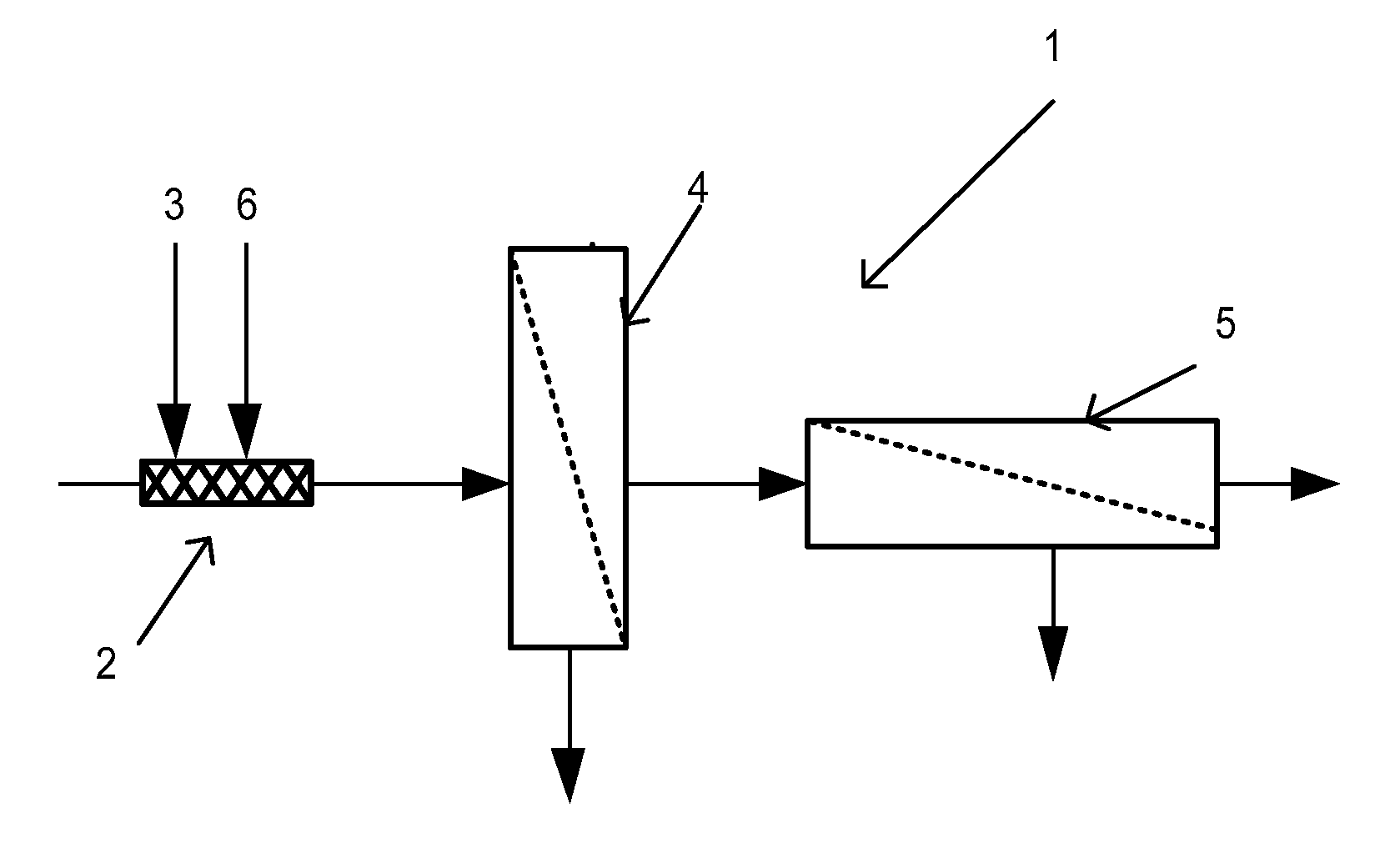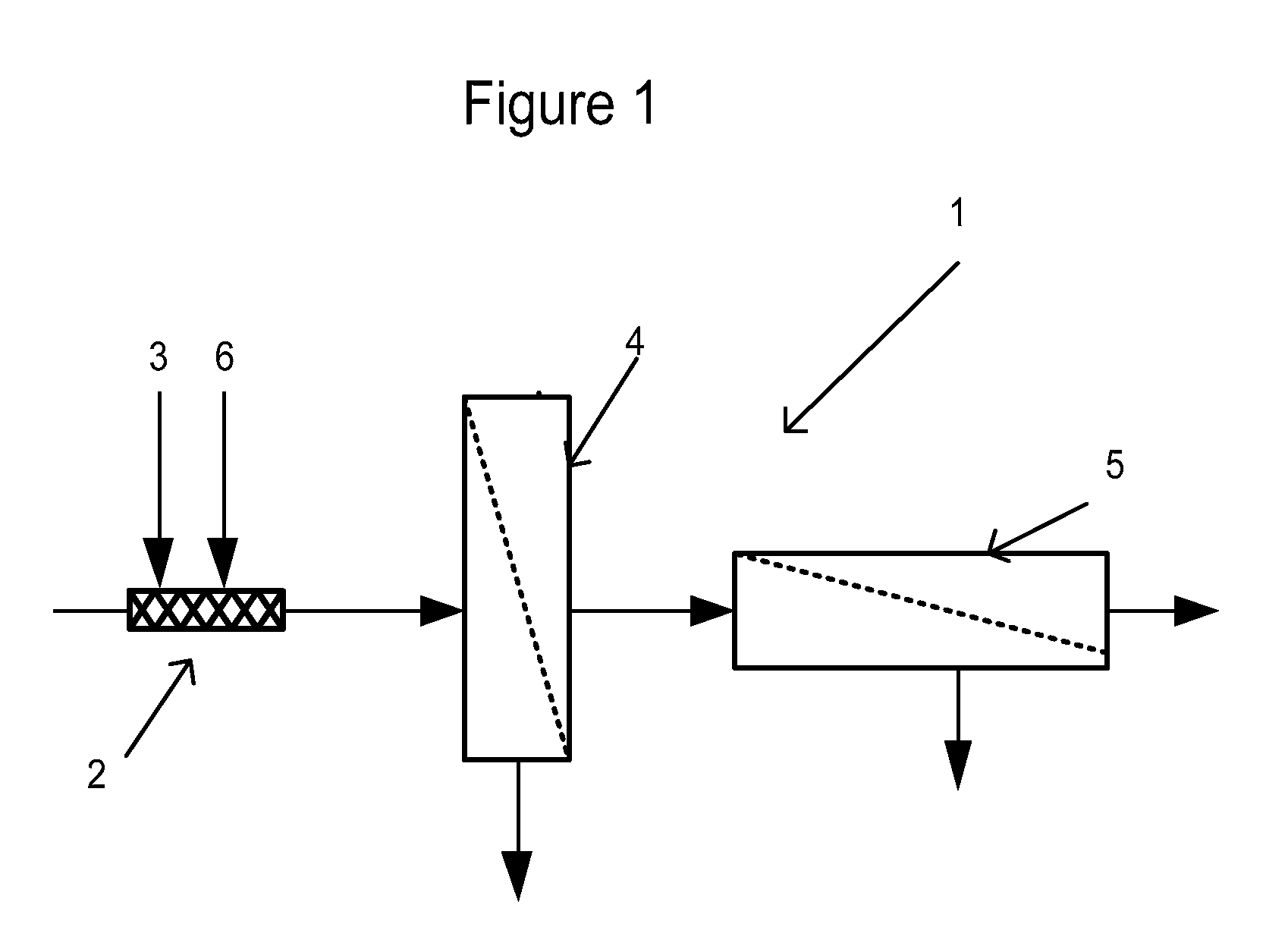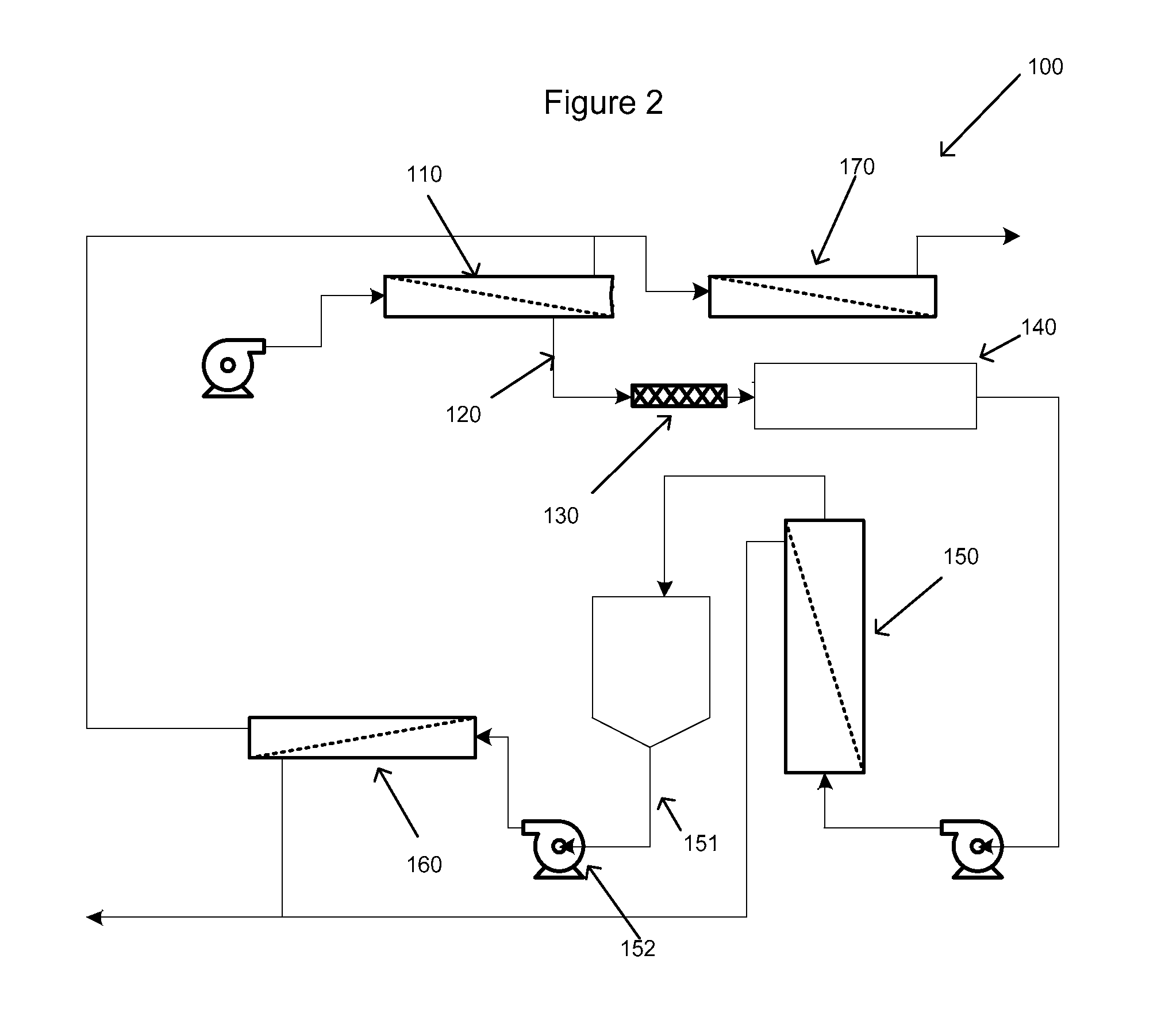Process for treating concentrated brine
- Summary
- Abstract
- Description
- Claims
- Application Information
AI Technical Summary
Benefits of technology
Problems solved by technology
Method used
Image
Examples
example 1
[0067]This example demonstrates the improvements in treating concentrated brine in accordance to an embodiment of the present invention.
[0068]Brine, including suspended solids, is pre-treated with a microfiltration device to remove the total suspended solids and to reduce the silt density index to less than 3 prior to processing in a reverse osmosis device (RO1). The brine has a total dissolved solids (TDS), which includes silica, magnesium, carbonate, calcium, sulfates, in the range of 5,000 to 20,000 mg / l. The brine is processed through a reverse osmosis device (RO1) and the concentrate from RO1 has a TDS in the range of 25,000 to 100,000 mg / l. Acid is injected into a fluid line containing the concentrate from RO1 to decrease the pH of the concentrate to about 7. 100 ppm of sodium aluminate is added to the fluid line and mixed thoroughly with the concentrate using a static mixer. The mixture is then held in a holding tank for a time period of about 10 minutes and precipitates of s...
example 2
[0070]This example demonstrates the degree of silica removal from a first concentrated brine in accordance with an embodiment of the present invention.
[0071]A pilot system is set up to test additional aspects of one or more embodiments of the present invention. Concentrated brine, including 160 ppm of silica and an initial conductivity of 994 uS / cm, is obtained from a reverse osmosis device and mixed with 20 ppm of sodium aluminate, at 100 rpm for 1 minute. The addition of the sodium aluminate increases the conductivity of the first concentrated brine to 1057 uS / cm. The mixture of the concentrated brine and the sodium aluminate is then held for times of 1 minute, 10 minutes, and 30 minutes and with differing amounts of silica-precipitates begin to form in the concentrated brine. The resulting concentrated brine containing the precipitates of silica is passed through flat sheet 0.45 micron PDVF microfiltration filter discs and the silica concentration in the filtrate is measured (see...
PUM
| Property | Measurement | Unit |
|---|---|---|
| Fraction | aaaaa | aaaaa |
| Fraction | aaaaa | aaaaa |
| Fraction | aaaaa | aaaaa |
Abstract
Description
Claims
Application Information
 Login to View More
Login to View More - R&D Engineer
- R&D Manager
- IP Professional
- Industry Leading Data Capabilities
- Powerful AI technology
- Patent DNA Extraction
Browse by: Latest US Patents, China's latest patents, Technical Efficacy Thesaurus, Application Domain, Technology Topic, Popular Technical Reports.
© 2024 PatSnap. All rights reserved.Legal|Privacy policy|Modern Slavery Act Transparency Statement|Sitemap|About US| Contact US: help@patsnap.com










